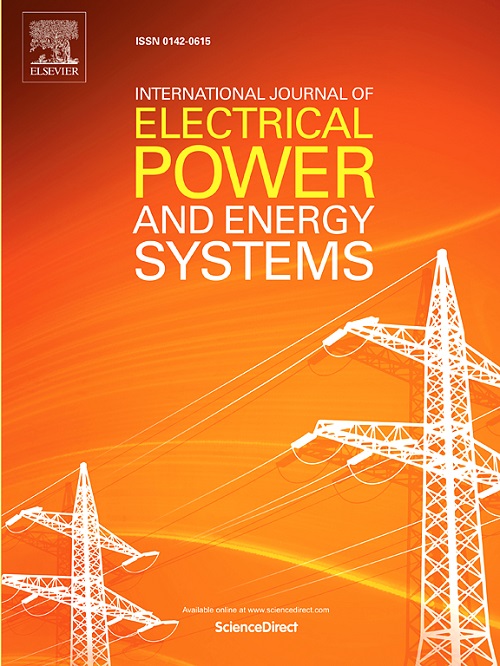A multi-time scale charging load forecasting method for electric private cars based on an improved gravity model considering stochastic charging behavior
IF 5
2区 工程技术
Q1 ENGINEERING, ELECTRICAL & ELECTRONIC
International Journal of Electrical Power & Energy Systems
Pub Date : 2025-04-10
DOI:10.1016/j.ijepes.2025.110640
引用次数: 0
Abstract
Electric Private Car (EPC) charging load forecasting is the basis of charging facility planning and long-term development of distribution network upgrading and transformation. However, most current studies focus on short-term charging load prediction, and rarely analyze the differences in charging loads in different day types and seasons in future years. As the coupling between operation and planning is increasing, it is not only necessary to observe the intraday charging load characteristics, but also to consider the evolutionary trend of the spatial and temporal distribution of charging loads over long timescales. Therefore, a multi-time scale charging load forecasting method for EPCs based on an improved gravity model that considers stochastic charging behavior is proposed. First, a consumer state decision model based on the Markov chain is construct to deduce the EPC ownership, as the basic data for charging load prediction. Second, based on the travel chain model and the improved gravity model, the user travel behavior for different typical days, seasons and years in each region and each time period in the future is described. Then, a stochastic charging behavior model based on the Hybrid Choice Model (HCM) is constructed. This model is used to simulate the stochastic charging behavior that takes differentiated individual attributes and attitudinal latent variables into consideration, and a simulation process for EPC charging load prediction at multiple time scales, including typical days, seasons, and years, is established. Finally, using the travel data of various administrative districts in Nanjing and EPC ownership, the model proposed in this paper can effectively predict the charging load of different regions at multiple time scales during 2024–2030.
基于改进重力模型考虑随机充电行为的电动私家车多时间尺度充电负荷预测方法
电动私家车充电负荷预测是配电网升级改造的充电设施规划和长远发展的基础。然而,目前的研究大多集中在短期充电负荷预测上,很少分析未来几年不同日类型和季节的充电负荷差异。随着运行与规划的耦合日益增强,不仅需要观察充电负荷的日内特征,还需要考虑充电负荷在长时间尺度上的时空分布演化趋势。为此,提出了一种基于考虑随机充电行为的改进重力模型的epc多时间尺度充电负荷预测方法。首先,构建基于马尔可夫链的消费者状态决策模型,推导EPC拥有量,作为充电负荷预测的基础数据;其次,基于出行链模型和改进的引力模型,描述了未来各地区、各时段不同典型日、季节、年份的用户出行行为。然后,建立了基于混合选择模型的随机充电行为模型。利用该模型模拟了考虑差异化个体属性和态度潜变量的随机充电行为,建立了典型日、典型季、典型年多时间尺度EPC充电负荷预测的模拟过程。最后,利用南京市各行政区的出行数据和EPC拥有量,本文提出的模型可以有效地预测2024-2030年不同时间尺度下不同区域的充电负荷。
本文章由计算机程序翻译,如有差异,请以英文原文为准。
求助全文
约1分钟内获得全文
求助全文
来源期刊
CiteScore
12.10
自引率
17.30%
发文量
1022
审稿时长
51 days
期刊介绍:
The journal covers theoretical developments in electrical power and energy systems and their applications. The coverage embraces: generation and network planning; reliability; long and short term operation; expert systems; neural networks; object oriented systems; system control centres; database and information systems; stock and parameter estimation; system security and adequacy; network theory, modelling and computation; small and large system dynamics; dynamic model identification; on-line control including load and switching control; protection; distribution systems; energy economics; impact of non-conventional systems; and man-machine interfaces.
As well as original research papers, the journal publishes short contributions, book reviews and conference reports. All papers are peer-reviewed by at least two referees.

 求助内容:
求助内容: 应助结果提醒方式:
应助结果提醒方式:


